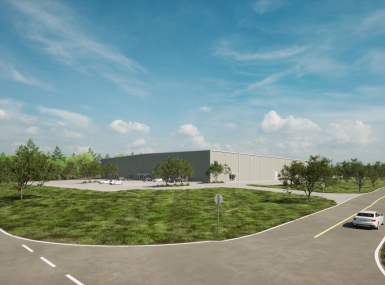Measuring economic recovery
Author
Upcoming Events
Related News

Key Takeaways
Economic recovery is a large umbrella with multiple facets including recovery of the labor market, business and production, the service sector and consumer spending. Each industry has been impacted in different ways from the pandemic and resulting economic fallout and, as such, recovery across all markets and sectors is often hard to define.
Labor market
Recovery within the labor market would mostly mean a return to healthy levels of unemployment, somewhere between 3.5 and 4.5 percent as defined by the Federal Reserve. Healthy levels of unemployment would also lead to most sectors returning to pre-recession employment levels, including county government workforces. Recovery within both of these indicators would imply a return to a tighter labor market such as the one experienced in early 2020.
Business and production
Business or production recovery would exist when businesses can safely reopen and sustain operations. Though some businesses producing goods such as masks, computer equipment and other high-demand items have expanded, many other businesses have seen revenues dwindle and production slow.
Service sector
Similarly, service sector recovery would imply companies such as airlines, hotels, resorts and casinos no longer need to lay off employees and can operate at full capacity. Recovery in this sector would also imply tourism returning to pre-recession levels as people become more comfortable taking business and personal trips. Service sector recovery may be harder to identify as some large companies have opted to allow employees to telework indefinitely, impacting both the commercial real estate market and the small service-based businesses such as restaurants and coffee shops in counties which support employees.
Consumer spending
Consumer spending indicators play an important role in tracking recovery. As of Jan. 3, 2021, national consumer spending was 2.5 percent below January 2020 levels, according to Harvard’s Opportunity Insights economic dashboard. One signal that economic recovery has been achieved will occur when consumer spending patterns return to pre-recession trends. The current decrease in consumer spending is mostly driven by high- and middle-income individuals decreased spending, as spending for low-income individuals is greater than pre-recession levels.
Consumer spending by industry would also likely return to pre-recession levels. Spending on grocery, health care and retail industries is above January 2020 levels while spending on entertainment and recreation, restaurants and hotels and transportation have all significantly decreased. Normalization of consumer spending across industries and income levels is one piece of the puzzle to understanding economic recovery within counties.
County economic recovery
For counties, economic recovery would be a similar picture. Namely, recovery would mean the local government workforce would return to pre-recession levels, adding 1 million jobs. Hiring freezes and other mitigation techniques would cease, furloughed employees would return to their jobs providing services to communities and the outlook for local government employment would be stable. For stable employment to occur, counties would have to return to pre-recession levels of blanced revenues and expenditures as well without risk for further decline.
Budget impacts
In July, NACo estimated counties would experience a $202 billion budget impact due to COVID-19 through FY 2021, derived by increased expenditures and losses within tax and non-tax revenue streams. Reports from the American Enterprise Institute (AEI) and the Brookings Institution are in alignment with NACo’s initial projection, though a landscape view of impacts at the county level are not yet available.
Though the financial impact has varied by county, some experiencing more severe impacts than others, the majority of counties have incurred unforeseen expenditures brought on by the pandemic, according to a recent NACo survey. As such, stabilization of county budgets will be key in county economic recovery. The reduction of financial strain and increased workforce will allow counties to adequately staff services to meet residents’ needs leading the services to no longer be overwhelmed by the level of need required.
Economic indicators
There are many economic indicators that can provide insight into recovery. Each month, the Bureau of Labor Statistics releases the employment situation report which details many indicators such as unemployment rates and employment levels across all industries, as well as permanent job loss and labor force participation rates.
Another set of indicators that can help gauge economic recovery is the monthly release of the Local Area unemployment figures. The Bureau of Labor Statistics releases these figures on the county-level at monthly intervals. Local economic recovery progress will be reflected in these figures and positive movement on the local level will indicate positive movement on the national level.
Additional indicators to watch include consumer spending, unemployment insurance claims and the new home construction market.
Vaccination rate
Potentially one of the most important indicators to watch for economic recovery is the vaccination rate. The current state of the economy and the pandemic are strongly intertwined. Much of the economic fallout resulting from the pandemic has stemmed from measures taken to control the spread of the virus and protect public health. As such, businesses and economies will not return to full production levels until the worries of the pandemic have been put to rest for the majority of the public.
New businesses, population level
Two final indicators which could provide insight on economic recovery are the business formation statistics and population levels. Business formation statistics, also reported by the DOC on their economic indicators dashboard, illustrate confidence in the ability to start a business as it measures business applications by quarter.
Newly released fourth quarter estimates indicate business applications were down 28.5 percent compared to the third quarter. A consistent increase in business applications would indicate rebounding businesses and strength in the economy.
Finally, population levels and migration patterns illustrate where jobs are, and where they are not. Many headlines during the pandemic pointed toward residents leaving large cities in search for more room for themselves or their families as teleworking became mainstream for many businesses. These outmigration patterns meant business activity within urban counties decreased, while activities in some suburban or rural counties may have increased.
The Census Bureau releases estimates on population levels and migration patterns on a regular basis. High outmigration, or people leaving an area such as large counties, could indicate a tough path ahead for the affected communities in terms of recovery as members of the labor force and employers leave the area.
With high unemployment holding steady in December and future economic uncertainty rising as concerns surrounding the pandemic increase, economic recovery will likely be a long process. Moody’s predicts, under the assumption of an additional relief package, real GDP growth could increase by 8 percent in 2021 and 4 percent in 2022. These estimates are similar to other sources.
Fannie Mae and the International Monetary Fund project 2021 US GDP growth to be 5.3 percent and 5.1 percent respectively – though neither noted that the estimates assume additional aid. Moody’s also estimated full employment could return by late 2022 or early 2023, measured to be about 4 percent unemployment and labor force participation rates around 63 percent, assuming an additional aid package.
Economic recovery will likely be sluggish without additional county spending, as it was following the great recession. The Federal Reserve found that decreased state and local government spending slowed economic growth for 22 out of 26 quarters between 2008 and mid-2014, resulting in 3.5 percent less economic growth by 2015. This also emphasizes the important role that local economies play in the national discussion.
Though economic recovery will likely be a long-term, uphill battle, counties are committed to sustaining and recovering local economies. These efforts by county leaders to foster local economic recovery will be key to economic recovery at the national level.

Attachments
Related News

North Carolina county shell building program draws new businesses
Nash County, N.C. invites potential new businesses to see themselves and their operations in large shell buildings the county erects in its business parks.

Large, small counties grapple with growth
New census data shows that nearly two-thirds of U.S. counties experienced population growth last year, with large counties accounting for most of the growth.